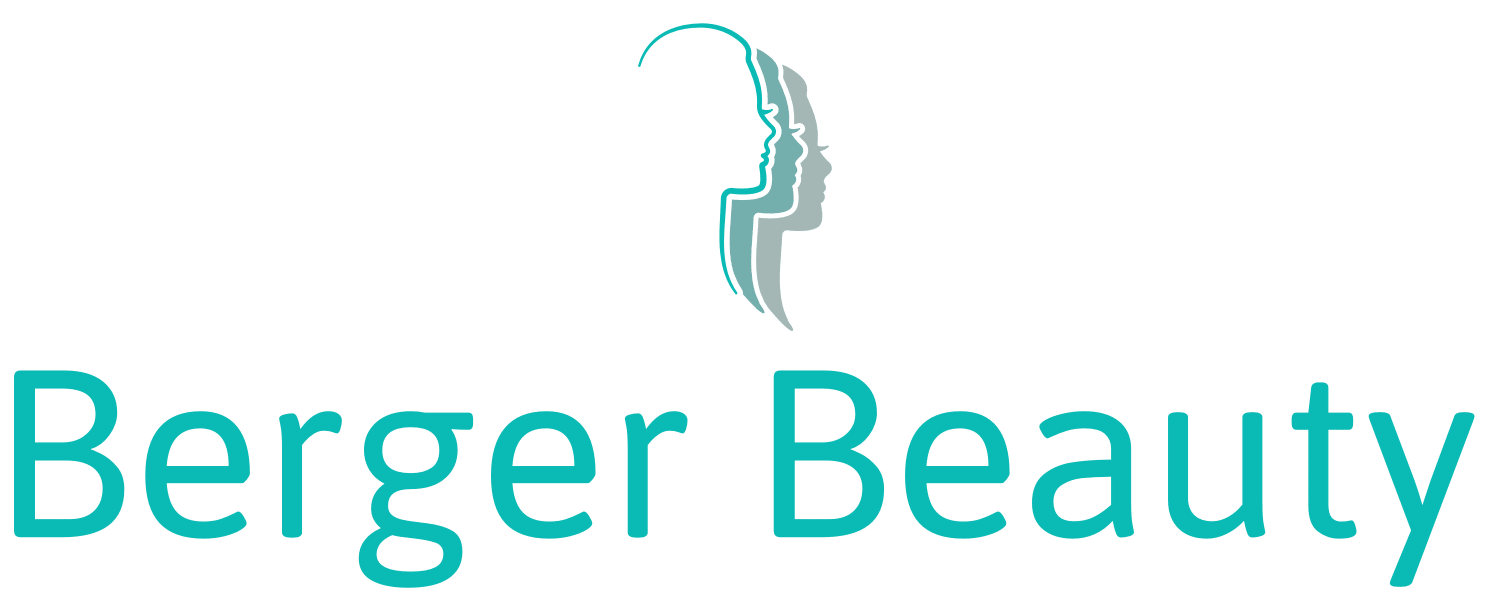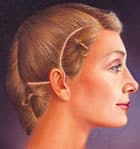A facelift (technically known as rhytidectomy) can’t stop this aging process. What it can do is “set back the clock,” improving the most visible signs of aging by removing excess fat, tightening underlying muscles, and redraping the skin of your face and neck. A facelift can be done alone, or in conjunction with other procedures such as a forehead lift, eyelid surgery, or nose reshaping. Call 818.245.6101 today and consult with Dr. Saul R. Berger about your Facelift and Neck Lift surgery!
The Best Candidates For A Face Lift
The best candidate for a facelift is a man or woman whose face and neck have begun to sag, but whose skin still has some elasticity and whose bone structure is strong and well-defined. Most patients are in their forties to sixties, but facelifts can be done successfully on people in their seventies or eighties as well.
A facelift can make you look younger and fresher, and it may enhance your self- confidence in the process. But it can’t give you a totally different look, nor can it restore the health and vitality of your youth.
Patient Testimonial
"I am writing to thank you for the fine job you did on my face. I feel you did a perfect job and I wish to thank you." - J.B.
All Surgery Carries Some Uncertainty And Risk
When a facelift is performed by a qualified plastic surgeon, complications are infrequent and usually minor. Still, individuals vary greatly in their anatomy, their physical reactions, and their healing abilities, and the outcome is never completely predictable.
Complications that can occur include hematoma (a collection of blood under the skin that must be removed by the surgeon), injury to the nerves that control facial muscles (usually temporary), infection, and reactions to the anesthesia. Poor healing of the skin is most likely to affect smokers.
You can reduce your risks by closely following your surgeon’s advice both before and after surgery.
Planning Your Surgery
Facelifts are very individualized procedures. In your initial consultation the surgeon will evaluate your face, including the skin and underlying bone, and discuss your goals for the surgery.
Your surgeon should check for medical conditions that could cause problems during or after surgery, such as uncontrolled high blood pressure, blood clotting problems, or the tendency to form excessive scars. Be sure to tell your surgeon if you smoke or are taking any drugs or medications, especially aspirin or other drugs that affect clotting.
Your surgeon will give you specific instructions on how to prepare for surgery, including guidelines on eating and drinking, smoking, and taking or avoiding certain vitamins and medications. Carefully following these instructions will help your surgery go more smoothly. If you smoke, it’s especially important to stop at least a week or two before and after surgery; smoking inhibits blood flow to the skin, and can interfere with the healing of your incision areas.
The Surgery
A facelift usually takes several hours-or somewhat longer if you’re having more than one procedure done. For extensive procedures, some surgeons may schedule two separate sessions.
Incisions usually begin above the hairline at the temples, extend in a natural line in front of the ear (or just inside the cartilage at the front of the ear), and continue behind the earlobe to the lower scalp.
In general, the surgeon separates the skin from the fat and muscle below. Fat may be trimmed or suctioned from around the neck and chin to improve the contour. The surgeon then tightens the underlying muscle and membrane, pulls the skin back, and removes the excess. Stitches secure the layers of tissue and close the incisions; metal clips may be used on the scalp.
Following surgery, a small, thin tube may be temporarily placed under the skin behind your ear to drain any blood that might collect there. The surgeon may also wrap your head loosely in bandages to minimize bruising and swelling.
After Your Surgery
There isn’t usually significant discomfort after surgery; if there is, it can be lessened with the pain medication prescribed by your local surgeon. (Severe or persistent pain or a sudden swelling of your face should be reported to your surgeon immediately.) Some numbness of the skin is quite normal; it will disappear in a few weeks or months.
Most of your stitches will be removed after about five days. Your scalp may take longer to heal, and the stitches or metal clips in your hairline could be left in a few days longer.
You should be up and about in a day or two, but plan on taking it easy for the first week after surgery. Be especially gentle with your face and hair, since your skin will be both tender and numb, and may not respond normally at first.
At the beginning, your face may look and feel rather strange. Your features may be distorted from the swelling, your facial movements may be slightly stiff and you’ll probably be self-conscious about your scars. Some bruising may persist for two or three weeks, and you may tire easily.
By the third week, you’ll look and feel much better. Most patients are back at work about ten days to two weeks after surgery. If you need it, special camouflage makeup can mask most bruising that remains.
You’ll have some scars from your facelift, but they’re usually hidden by your hair or in the natural creases of your face and ears. In any case, they’ll fade within time and should be scarcely visible.
For a facelift in Burbank California contact board certified plastic surgeon Dr. Saul Berger
Content courtesy of PlasticSurgery.org
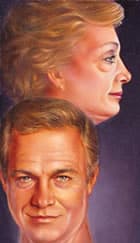
A facelift can improve the deep cheek folds, jowls and loose, sagging skin around the neck that come with age.
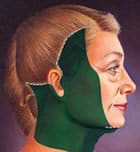
Incisions usually begin above the hairline at the temples, follow the natural line in front of the ear, curve behind the earlobe into the crease behind the ear, and into or along the lower scalp.
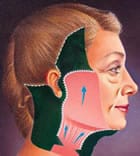
Facial, neck tissue and muscle may be separated; fat may be trimmed or suctioned and underlying muscle may be tightened.

After deep tissues are tightened, the excess skin is pulled up and back, trimmed and surured into place.
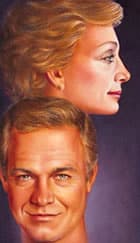
After surgery, you’ll present a fresher, more youthful face to the world.
FAQ's for Neck Lift
The purpose of cosmetic procedures for the neck fall into two broad categories. First, individuals may wish to reverse changes of aging, which often includes laxity of the skin as well as drooping of other neck structures underneath the skin. These changes mainly affect individuals who are over 40 years old. A second category applies to those people who wish to achieve a more attractive neck profile. This may involve reducing fat accumulation to make the neck appear slimmer or to improve the sharpness of the angle the neck forms with the jawbone from side profile view (closer to 90 degrees). A sharper neck angle with the jawline conveys the appearance of youthfulness and slimmer weight.
There are several approaches that can be used for reducing fat in the neck. A common option that has been popular for years is liposuction. With this highly effective technique, the incisions used are extremely small, and the fat removed generally does not return if one’s weight remains stable. Another option is the use of Kybella, a medication that dissolves fat in the neck simply by use of injections. This is an in-office procedure that does not involve any surgery and can be accomplished in a short time. Fat removed with Kybella does not return if weight remains stable. Finally, fat can also be removed directly by way of surgery, especially if another surgery of the face is being done at the same time.
There is no precise definition of a neck lift that is considered universally accepted, since procedures to improve the neck use a variety of methods to achieve their goals. Also, it can be confusing when plastic surgeons refer to a facelift and neck lift as somewhat interchangeable terms. In most situations, it represents a surgical procedure that is intended to reverse changes of aging in the neck and the facial tissues above the neck to the cheek. The details of each procedure have to be established specifically for each patient, since the changes of aging vary from person to person. Because tightening of the skin generates an excess amount that must be trimmed away, incisions around the ears are typically involved, and an incision under the chin may also be used. Well-designed incisions in these areas often heal extremely well with low visibility.
Although there are doctors who advocate thread lifts as a solution for facial aging, threads do not shift the tissues of the neck and face as thoroughly and completely when compared to a surgical facelift. In my experience, the threads provide limited and, often, short-term results. Individuals need to consider the costs for such limited results and the possible negative effects of scar tissue created by the threads which could impact a subsequent facelift surgery.
The face is blessed with some of the best blood supply in the body and this contributes to better healing than in other body parts. The discomfort with these procedures is typically mild to moderate, and easily tolerated with low doses of pain medication. After about 10 – 14 days, most people are very pleasantly surprised at how good they look and the ability to be out and socializing.
There is no set or established time that the results of this surgery will last. As a general rule, the younger the age of the patient, the stronger the facial tissues are, and that will support longer-lasting results. It is common for patients to be candidates for these procedures as early as their mid-forties, depending on their aging changes. It is not unusual to achieve improvement in one’s appearance of ten years or more!
Schedule a Facelift & Neck Lift Consult in Burbank, CA!
For a better understanding of how the Facelift and Neck Lift surgery works, or to determine whether you are a candidate for the procedure, please call our office at 818.245.6101 today. Dr. Saul R. Berger and his talented team look forward to serving you!

